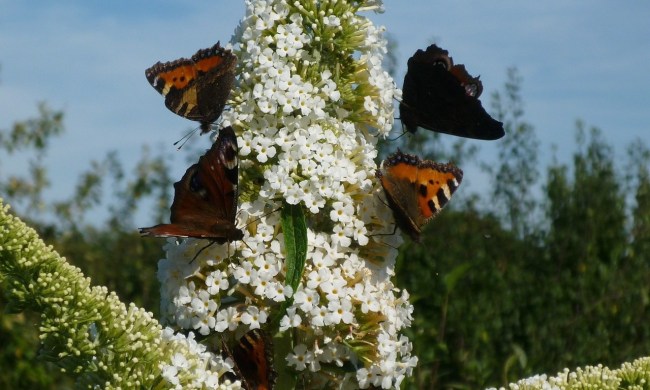If you’ve been on the hunt for a beautiful, tall flower to add to your garden then canna lilies might be just what you’re searching for. These lovely flowers are a welcome addition to most gardens, and they’re sure to bring practically any gardener joy. Wondering how to grow and care for these delightful and colorful flowers? This guide will answer all your questions, from planting them to warding off their most common pests and diseases. Whether you’re hoping to grow a single canna lily or an entire field of them, this is the guide for you.
Planting canna lilies

You can start planting your canna lily flowers any time after the last frost of the year, typically in mid-spring to early summer. If you want to start them earlier, canna lilies can be started indoors and transplanted into your garden after the last frost. If you choose to do this, start your canna lily plants about a month before the predicted last frost. Be sure to space them roughly 1 1/2 to 2 feet apart, so they have room to grow.
You can also leave your canna lilies in containers, but be prepared to repot them as they grow. Canna lilies are tender perennials, meaning they will only regrow in the spring in places with a warm or mild winter. Bringing them indoors during cold weather is a good way to grow them as perennials in colder regions.
Whether they’re in containers or in your garden, sun and soil remain the same. Canna lilies need full sun and soil that is slower to drain or otherwise has good water retention. Canna lilies enjoy wet soil, so avoid planting them in soil that drains quickly.
Canna lily care

Canna lilies are water-loving plants, and a large portion of their care is dedicated to keeping them hydrated. If they don’t get enough water, your canna lilies will be smaller and duller, so be sure to keep their soil consistently moist. Depending on the weather, they need at least one deep soaking per week.
Canna lilies typically flourish without fertilizers, but you can give them a balanced fertilizer during the growing season if you prefer. As flowers fade, remove them to make room for new ones. Deadheading your canna lily helps keep the plant healthy and encourages it to keep blooming. When the weather begins to turn cold in fall and your canna lily goes dormant, you can cut it back to a few inches above the ground. Cover it with mulch or bring it indoors if you need to keep it warm.
Common pests

Small garden pests like aphids and mites can sometimes bother canna lilies, although they are rarely a serious problem. An insecticidal soap or neem oil can help keep them at bay if they bother your plants too much. You’ll also need to look out for canna leaf roller caterpillars. As the name suggests, they love canna lilies and are often found in the rolled part of their leaves. The caterpillars eat the leaves, damaging the plant. Contact insecticides can keep them away, and cutting back the foliage during fall limits their available habitat. You can leave them to become butterflies if you prefer, but they are not actually native to North America, so don’t feel too bad about getting rid of them.
Common canna lily diseases

Canna lilies can also develop a few different diseases. These fall into two main categories. The first is viral infections. While some symptoms differ from virus to virus, two are fairly consistent. Stunted or misshapen growth is the biggest sign, but many viral infections also cause discoloration on leaves and stems. Viral infections can spread from plant to plant via pests, and a select few may be able to live in the soil for a time. Infected material should be removed and destroyed to prevent the virus from spreading.
The second category is bacterial and fungal infections. While bacterial and fungal infections are caused by different things, both thrive in warm, humid weather. The easiest to recognize symptoms are discoloration on the leaves and stems, often spreading, darkening, and causing the affected area to become soft. Some will even cause fuzzy mold or mushrooms to sprout on or near the plant. Unlike viral infections, most fungal infections can be treated with fungicides and the removal of infected leaves or stems. They can be prevented by increasing air circulation.
Canna lilies are beautiful and striking, so it’s easy to see why they’re so popular. Luckily, they’re also fairly easy to grow. As long as you have a sunny patch of land and plenty of water, these gorgeous flowers will dazzle you with their dramatic colors and shapes. You won’t be the only one enjoying their blooms, though — canna lilies are attractive to hummingbirds and other pollinators.




